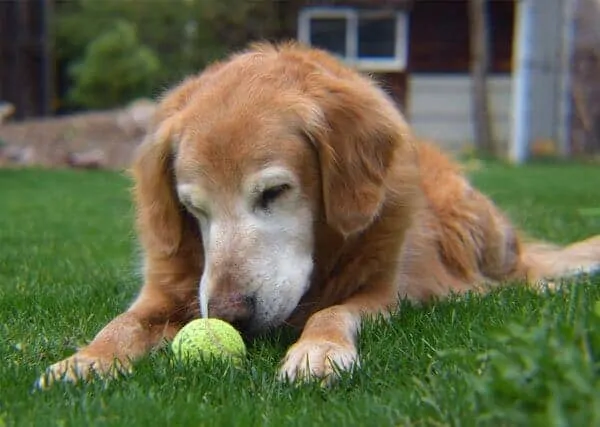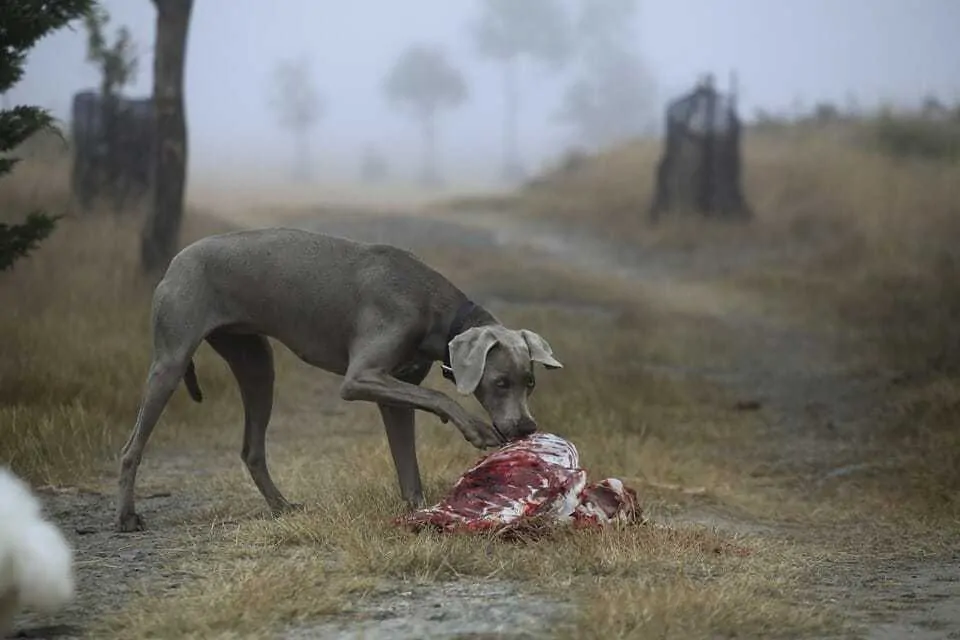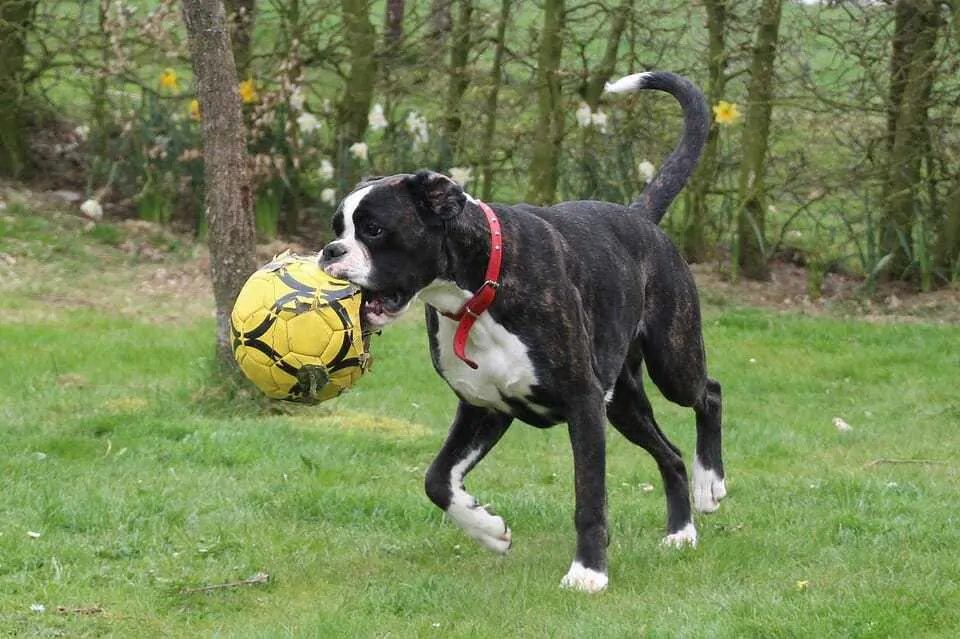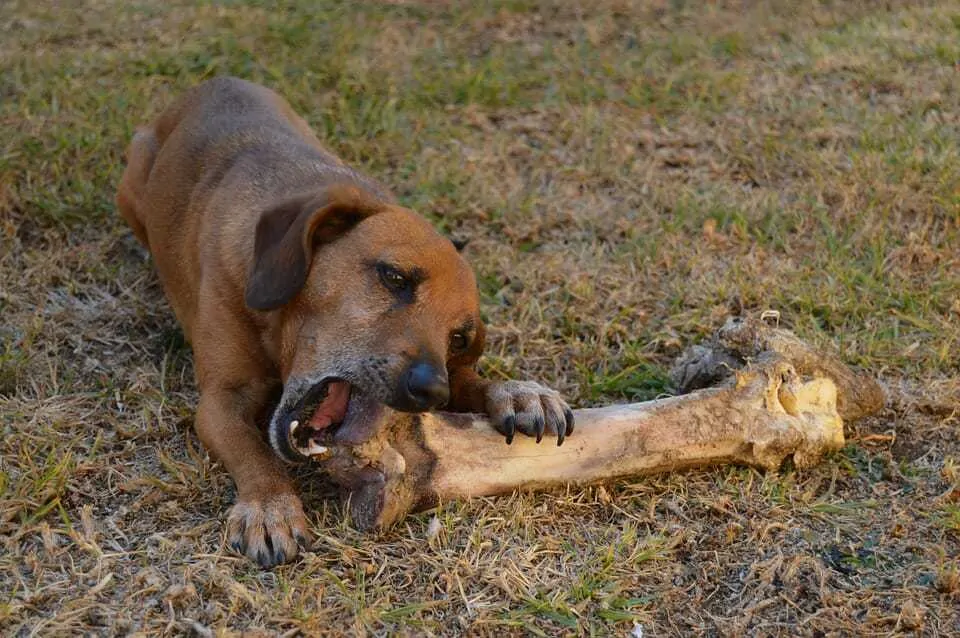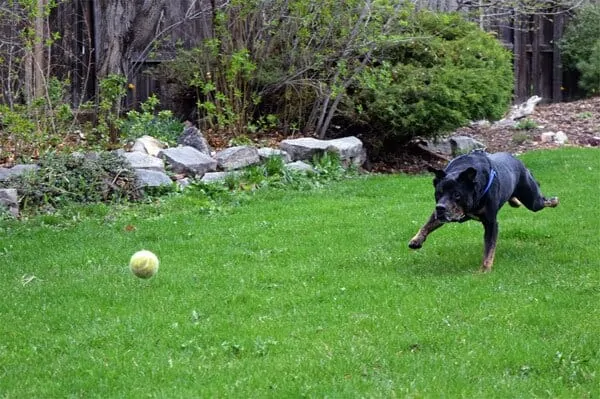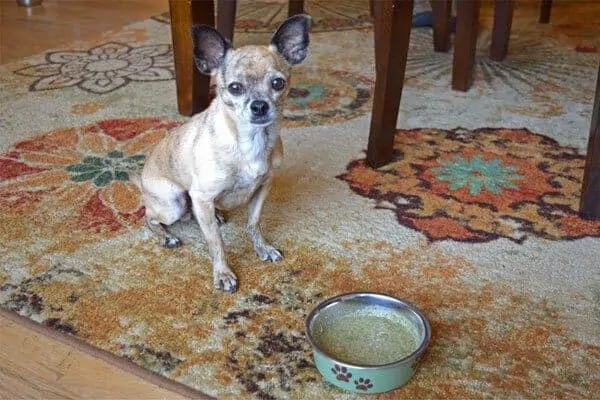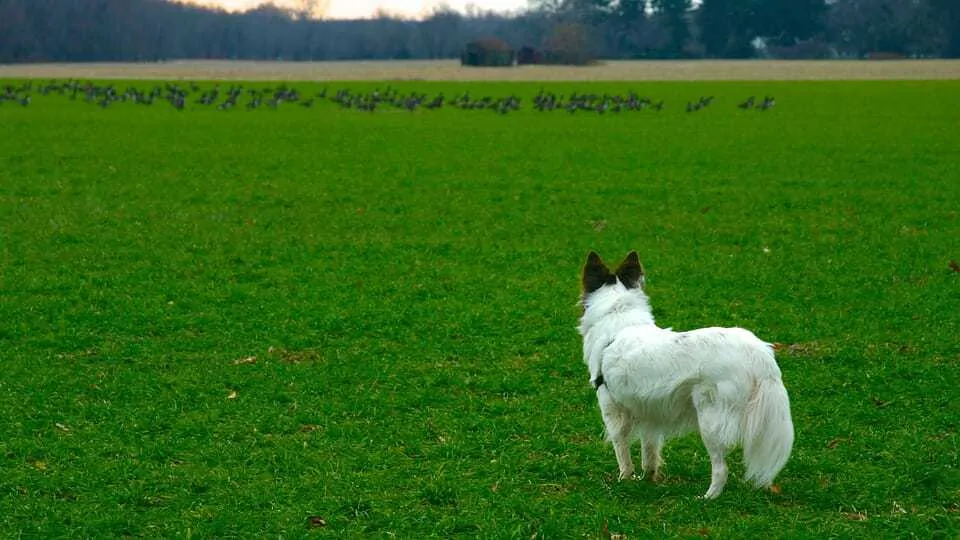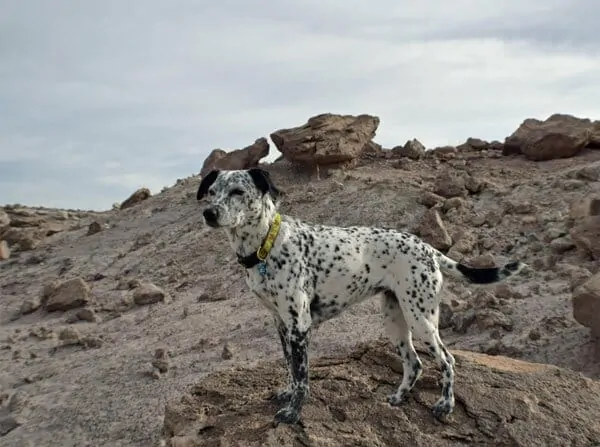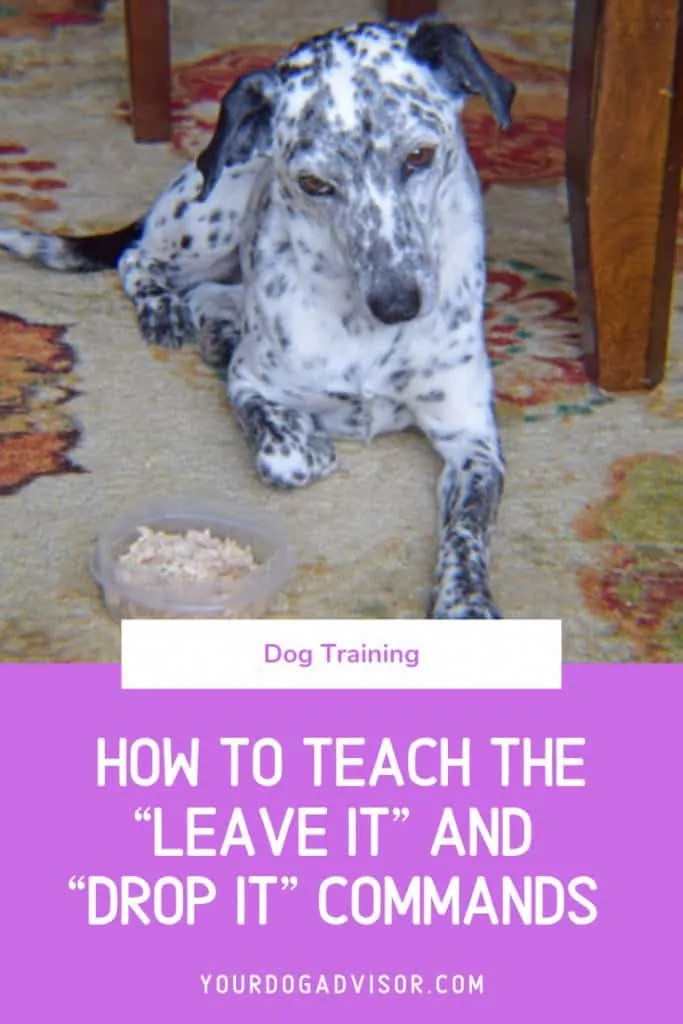It’s one of the most important commands you can teach your dog. And can literally be the difference between life and death. So how is it that so many dogs and their owners struggle to grasp the leave it behavior?
If you’ve ever dropped food on the floor and shouted at your dog to leave it only to watch them gobble it without hesitating, then you know what I’m talking about. And if you’ve ever had your dog dash across a busy street after an animal or another dog, then you know how dangerous an unreliable leave it cue can be.
True, this command is one of the hardest to teach. But much of the confusion surrounding this cue comes not from the difficulty of the behavior itself, but from inconsistent use.
In this article, I’ll take you through the steps of teaching a bombproof leave it command. But before we can work through teaching our dog the actual behavior, we must first define what leave it means. And to do that, we have to look at another behavior that seems similar but is actually very different.
Contents
The Difference Between Leave It and Drop It
The most consistent inconsistency I see owners employ with the leave it cue is expanding its use to include asking their dog to drop something. Sure, in our human minds this seems like a logical connection. Your dog races to pick something up off the floor. You scream leave it. They pick it up anyway and you continue to scream leave it until you finally pry it from their jaws.
We often think of the drop it cue as something only useful during a game of fetch. But having a reliable drop it command can be life-saving if your dog ever gets a hold of something dangerous like a box of rat bait or an extension cord.
Later on, as you’re playing a game of fetch in the backyard, you use the same leave it command to ask your dog to let go of the ball. In your mind this makes sense. But in your dog’s mind, the connection between the two behaviors is much less obvious.
>>>Consistency is just one of many mistakes owners make when training their pooch. Are you guilty of making any of these other seven common training mistakes?
What does leave it mean?
To create a reliable leave it behavior in your dog, you first have to define a concrete definition of the behavior within your own mind.
Consider what you’re actually asking your dog to do when you tell them to leave it. Maybe they’re headed for that dropped piece of food on the kitchen floor. Or maybe they’re getting a little too worked up as they pass another dog on the trail. Or maybe they’ve gotten sidetracked by a rabbit during a game of chuck-it in the field behind your house.
In any of these cases, what you’re asking your dog to do is to stop paying attention to some object, be it food, dog, or bunny.
This is not at all the same as asking your dog to drop something that they have picked up.
We’ve all been there. Your dog finds something on the trail. They think it’s irresistible. You can’t even look at it without retching. This is when a rock-solid leave it comes in handy!
The importance of drop it
While you may be able to draw a connection between not paying attention to some object and spitting something out of your mouth, that’s a much tougher task for your dog. And by using the same command for these two drastically different behaviors, you are guaranteed to end up with an unreliable command in both situations.
>>>Leave it and drop it aren’t the only important commands your dog should know. Learn how to train your dog to stay in any situation.
Instead of expanding the leave it command to include both situations, you need to create two cues with two concrete definitions.
The first cue, drop it, should only be used when your dog has something in their mouth that you would like them to let go of. This might be a tennis ball, rope toy, shoe, turkey drumstick, or a bottle of medication. In any case, you’re asking the same thing of your dog: Let go of that thing in your mouth.
The second command is our true leave it cue. This command is only used when you are asking your dog to stop paying attention to something. If they already happen to have that something in their mouth, then you should transition to using the drop it cue instead.
By separating these two behaviors into two different commands, you will better help your dog understand what you are asking. And that’s the first step to forming a reliable, life-saving leave it behavior.
One important key to training the drop it behavior is to never chase your dog when they have something in their mouth that you want them to let go of. For your dog, this is a fun game that can be much more rewarding than any treat. If your dog won’t drop the object, do your best to control them without chasing and then take the object away.
How to Teach Drop It
It doesn’t matter which behavior you teach first, so long as you use each cue consistently.
If your dog enjoys fetching or tug-o-war, then drop it will be fairly easy to teach. If, on the other hand, you have a dog that doesn’t often pick up objects on their own, you’ll have to get a little more creative to find opportunities to employ this training technique.
>>>Love working with your dog? Here are eight fun tricks you can train them to do next.
Get set up
To start teaching drop it, you’ll need to find a quiet, distraction-free environment like your living room. You’ll also need a hefty supply of high-value training treats, a treat bag, and a few different objects that you know your dog will pick up.
If your dog is clicker trained, you can use a clicker to mark correct behaviors.
Step 1: Find the right low-value object
To start, you’ll need an object your dog will pick up, but not one that they enjoy more than the treats you’re using. For example, my Dalmatian mix loves tennis balls. Probably a little too much. To start teaching this command, I would use a different kind of ball, like a rubber Kong ball, that she will pick up but will also happily trade for a treat.
>>>Is your dog like mine and a little too obsessed with tennis balls? Check out these tennis ball alternatives that might make training easier.
TIP: If your dog doesn’t like toys, get creative. Think of any object you’ve seen them pick up in the past. Maybe a chew bone, dental-stick, or another food-type object. If this is the route you have to go, just make sure that the treats you’re using are even more enticing than the object.
Step 2: Trade the object for treats
With your dog in front of you, start playing with them. Get them excited and focused on the object you’ve chosen.
Then, offer them the object. Once they have it in their mouth, take a treat and put it directly in front of their nose. At the same time, say “drop it!” in an excited voice.
It’ll take time before your dog will readily let go of a high-value object like this bone just because you said drop it. But if you work slowly up the value chain using different objects and enticing treats, eventually your dog will drop anything you ask them too because they associate doing so with only positive outcomes.
The moment your dog drops the object in order to grab the treat, say “yes!” or “good dog!” or some other positive marker and give them the treat.
>>>Learn more about why we recommend positive training and not punishment based training for your dog.
While your dog wasn’t actually responding to the command when they dropped the object, we are still going to reward them as if they had. Once you have completed enough repetitions, your dog will associate the command with the behavior itself.
Repeat this process over and over about 40 times to build that association.
TIP: If your dog doesn’t drop the object when you present the treat, it just means that they value the object more than the food you are trying to trade it for. You can either find a new object that they like less or find a treat that they like more.
Step 3: Say the command before presenting treats
Once you have done at least 40 reps, then you are ready to test your dog to see if they have built an association between the command and the behavior.
Start playing with your dog as you were before. Once they have the object in their mouth say “drop it!” but this time DON’T present the treat. If your dog has made the association, then they should drop the object in anticipation of the coming treat.
If they do drop the object, use your positive marker and give them the treat with lots of praise.
If they don’t drop the ball, present the treat as you did before to entice them to drop it and return to step 2. Do a dozen or so more reps before trying step 3 again.
Continue asking your dog to drop it without presenting the treat until they are responding to the command reliably by dropping the object right away every time.
In this video, you’ll see how to use the presentation of a treat to entice your dog to drop a toy. And how to pair this with the drop it cue to train your dog to perform this behavior on command.
Step 4: Use a higher-value object
Once your dog understands the drop it command with a low-value object, you are going to change out the object for something they value a little more. This might be a favorite toy or even a bone. Just make sure that the treats you are using are still more valuable than the object.
For the first few repetitions, present the treat simultaneously with the drop it command as you did before.
If your dog eagerly drops the new object to get the treats, you can try just using the drop it command to see if they will drop the object without the treat being presented first.
If not, you will need to do multiple repetitions of saying the command and presenting the treat at the same time. Eventually, your dog will make the same connection they did before and drop the object when only the command is said.
>>>Does your dog have other behavior issues you need help with? Learn how to deal with the top 10 most common behavior problems.
Step 5: Generalize to different objects
Once your dog eagerly drops the higher-value object on cue, then you are ready to try an even higher value object.
Continue moving through these steps with each new object until your dog will respond by dropping each object when only the command is given.
Fetch is the perfect game to play to help reinforce the drop it command. Your dog gets rewarded with another toss every time they successfully drop the ball, no treats needed!
Eventually, you will get to the point where the object in their mouth is more valuable than the most valuable treats you can find. By this point, your dog should have such a rock-solid understanding of the drop it behavior that they will still drop the object when the cue is given.
If not, return to a lower value object and continue working up the value chain more slowly.
TIP: When working with a very high-value object it can be helpful to present your dog with a “jackpot” reward when they do the behavior correctly. Once your dog drops the high-value object after hearing the command, give them multiple treats and tons of praise. If the object they dropped is safe and edible, you can even give that to them as an added prize and let them eat or chew on it. This can be helpful in teaching your dog that drop it doesn’t always mean they will lose the object that they were previously holding.
Once your dog understands the drop it command, you’ll want to start using it in more real-life situations.
Try stashing high-value treats around the house and surprising your dog with the drop it cue anytime they happen to have something in their mouth. Once the object hits the floor, reward them with the hidden treats.
>>>Do you have a dog with a lot of drive? Read up on some great tips to help you survive your high energy dog.
How to Teach Leave It
Remember, the leave it behavior is all about asking your dog to stop paying attention to something. When teaching this command, you will reward your dog when they stop looking at the object in question. They may just look away from it or they may look directly at you. Either behavior is correct.
Many dogs associate the leave it command with making eye contact with their owner. Since this qualifies as removing their attention from the object you asked them to leave, it is perfectly okay if this is how your dog reacts. It’s also perfectly fine if they simply look away from the object.
Get set up
Just like with the drop it command, you are going to need a quiet room to train in and some high value treats. In this exercise, we will use treats as both our object and reward.
Step 1: Make a fist around a treat
With your dog sitting or standing in front of you, take a treat in your hand, make a fist around it and put your fist directly in front of your dog’s nose.
As you present your fist, say “leave it!” in a stern but upbeat voice.
Don’t expect your dog to react to the command. Instead, continue to hold your fist in front of them while they lick, paw, and gnaw on it to try and get to the treat. Don’t repeat the command or do anything else. Simply be patient and let your dog figure out on their own that no manner of physical force will get them that treat.
Eventually–maybe ten seconds after your start or a few minutes–your dog will look away from your fist. They may look at you as if pleading for help or they may just give up and turn their attention elsewhere.
In either case, the moment your dog looks away from your fist, give your positive marker and give them a treat with your opposite hand. It’s important that you do not treat them with the treat you asked them to leave. You don’t want to build the habit in your dog of leaving an object only to eat it after being praised. This could be dangerous if you ask your dog to leave something toxic like spilled medication or certain foods.
Repeat this process over and over with your dog, only rewarding them when they look away from your fist.
After a few dozen or more repetitions, you should notice your dog looking away from your hand the moment you present it and say leave it. Once this happens, you are ready for step 2.
In this video, you’ll see how to play the hide-a-treat in the fist game to introduce the leave it command to your dog.
Step 2: Switch hands
At this point, it is more likely your dog has figured out the game rather than actually having learned what leave it means. In order to help them focus on the command rather than just learning the rules of the situation, we are going to change different aspects while keeping the command the same. Over time, they will learn that the one constant is the command and start to truly associate it with the behavior we are asking for.
Repeat the above process, but this time use your opposite hand. Make sure to always reward your dog with a treat from your other hand and not the one you asked them to leave.
After multiple repetitions, your dog should start turning away from your fist right when you present it and say leave it just as they did before.
Step 3: Place the treat on the ground
Once your dog will immediately remove their attention from your fist no matter which hand you’re using, then they are ready for another rule switch.
This time, with your dog sitting or laying down in front of you, place a treat on the ground about a foot from their nose. As you set it down, say “leave it!”
Keep your hand next to the treat and cover it if your dog tries to eat or paw at it. Each time your dog moves away (moves their head back or stops pawing at it) lift your hand off the treat so they can still see it. Only once they actually stop looking at the treat should you use your positive marker and reward them with a different treat.
Repeat this process until your dog will immediately look away from the treat the moment you set it down and say leave it.
A reliable recall is great, but being able to get your dog’s attention back on you before they take off can be the difference between a fun outing and a complete disaster.
Step 4: Walk past the treat on leash
Once they are familiar with the concept of leaving an object on the ground, then we are going to switch the rules slightly again.
With your dog on a short leash, toss a treat on the floor about five feet in front of you. Make sure your dog can see the treat and knows where it landed.
Slowly walk toward the treat with your dog, but pass it with enough distance that your dog can get close to it but not actually pick it up. As your dog moves toward the treat, say “leave it!” and stop walking. Let them pull toward the treat to their heart’s content but make sure you hold the leash short enough that they can’t get it.
TIP: Do not use the leash to correct your dog for trying to get the treat. It should act only as a safety line to prevent them from picking it up, not as a training device of any kind.
Once your dog stops pulling to get to the treat and redirects their attention to something else or back to you, then use your positive marker and reward them with a different treat.
>>>Looking for another way to keep your dog’s attention on you during walks? Teach them how to heel.
Repeat this process until your dog will immediately turn their attention away from the treat when you say leave it.
In this video, you’ll see how to use the treat on the ground game and the leash game to reinforce the leave it behavior in multiple different situations.
Step 5: Generalize to different objects
Once your dog will respond to the leave it command in all these different situations, then you are ready once again to change the rules of the game. This time around, instead of using treats, you are going to choose a different object your dog enjoys. This might be a favorite stuffed animal, a tennis ball, a piece of pepperoni, or a chew bone.
If the object is small enough, you can start by playing the fist game. If the object is too big to hide in your fist, start with one of the other games instead.
You can even generalize these games to non-food objects that you want your dog to leave. Ask a friend to walk by your window and use your leave it command. Once your dog stops looking at (and barking at) the person walking by, reward them with a tasty treat. Repeat until your dog quickly reacts to the command.
You can play a similar game outside on-leash once your dog has really mastered the leave it command. Wait for your dog’s attention to catch on something (another dog, a bird, etc.) and say “leave it!” Once their attention moves off that object, praise and reward them.
Always make sure the reward treats you’re using are higher value than the object you’re asking your dog to leave.
Once your dog understands the leave it command in regard to multiple objects, then you are ready to do some real-life trials just as you did with drop it. Have treats at the ready or hidden around the house and surprise your dog with a tasty reward after you ask them to leave something. If you don’t have treats available, use plenty of praise instead.
Continue Reinforcing in the Real World
One reason the leave it, and even the drop it command, are so difficult to master is that oftentimes not complying with the command is more rewarding than doing what you’re asking. If I asked you not to eat one of the donuts in the break room and told you I’d reward you with broccoli if you obeyed, you probably wouldn’t listen.
Leave it is a useful command if your dog tries to grab something they shouldn’t, but it’s just as useful and important in keeping your dog from running off after wildlife and other dogs. Before you trust your pup to behave off-leash, make sure they have a strong leave it and recall.
It’s the same with your dog. Chasing that bunny or running around with that stinky tennis shoe is way more fun than getting a measly treat.
In order to overcome this natural catch-22 and keep your leave it reliable, you need to:
- Keep up with your training. Practice these commands in controlled situations as much as possible to keep the behavior strong. If your dog’s instant reaction to hearing the command is to comply, then there is less of a chance they will get the opportunity to reward themselves for doing the opposite of what you’re asking.
- When possible, make the reward better than the object you ask your dog to leave. This turns the table and helps convince your dog that complying is the more rewarding route to take.
- Control the situation as much as possible. If you ask your dog to leave the bunny and they ignore you and end up chasing it, much of your training just went out the window. But, if you ask your dog to leave the bunny, they ignore you, but they are on a leash and can’t chase it, then you have an opportunity to wait for them to comply and then reward them once they do listen to you.
- Stay consistent. If you ask your dog to leave something, make sure they don’t get it the second you turn your back. And if your dog already has something in their mouth, make sure to use your drop it command instead.
With enough practice and some diligence on your part, it is possible to teach your dog a reliable and bombproof leave it command. One that may even save their life someday.

Sara Seitz has spent most of her life in the pet industry and has a bachelors in animal behavior from Colorado State University. Sara started working with dogs and cats as a high schooler at a rural boarding kennel. There she learned a lot about the bad and the ugly of the pet service industry. But not even the toughest day at that job would dissuade Sara from following her dream of working with animals.
In college, Sara got a job at a dog daycare and boarding facility in Fort Collins, Colorado. Her new career provided even more opportunities for learning about dog behavior than her classes did. As general manager of the daycare, Sara helped the company launch a new in-home pet sitting branch and trained to become a certified dog trainer. Between shifts taking care of peoples pets in-home and supervising dogs during playtime at the daycare, Sara organized and taught obedience classes.
Sara has always been passionate about bettering the lives of our canine companions. She soon found that advocating for and educating owners in the power of positive reinforcement training was one of the best ways to help dogs and their owners live happier lives.
